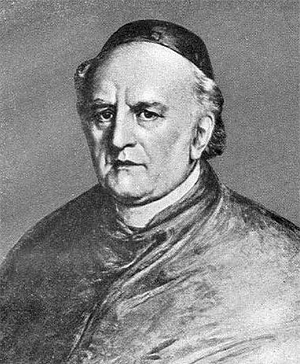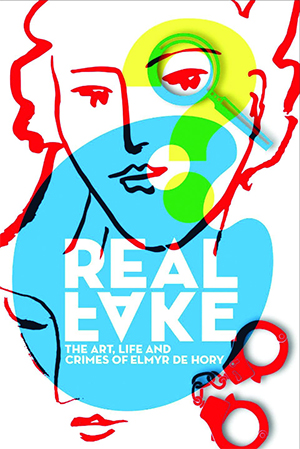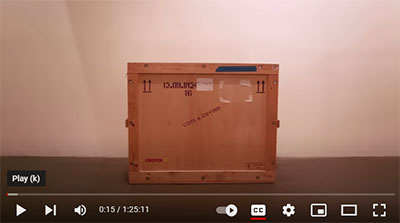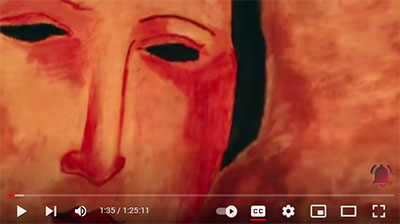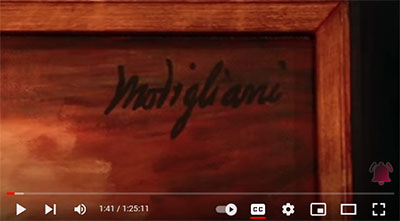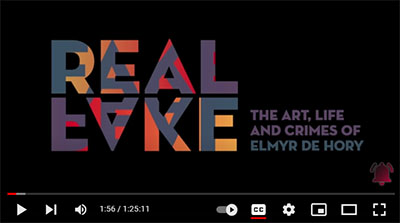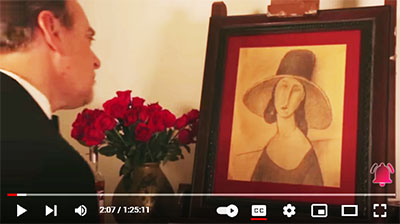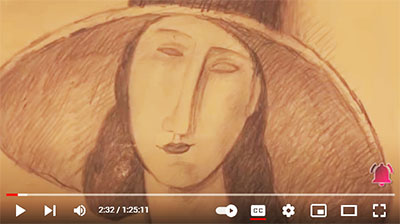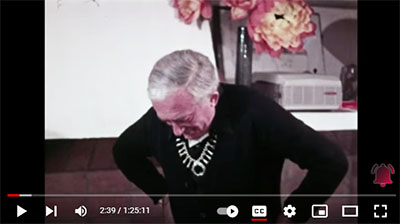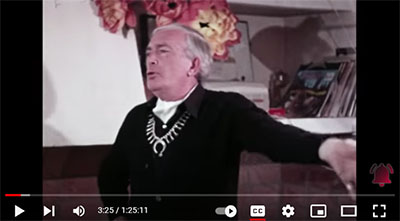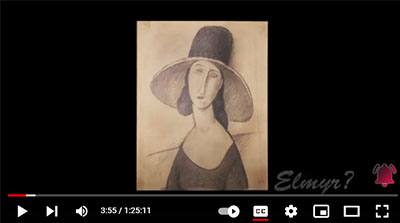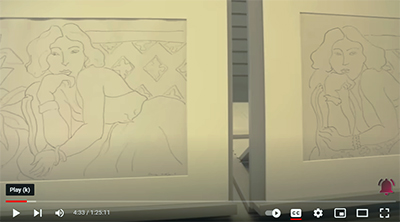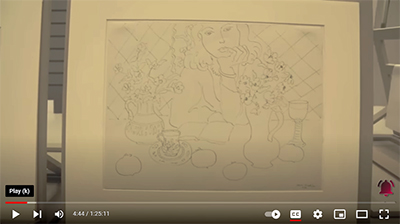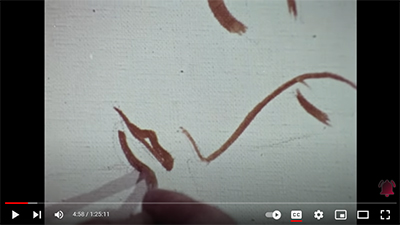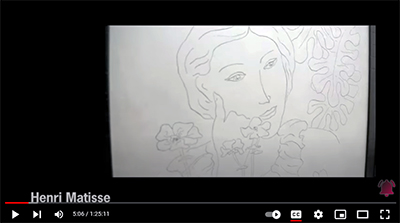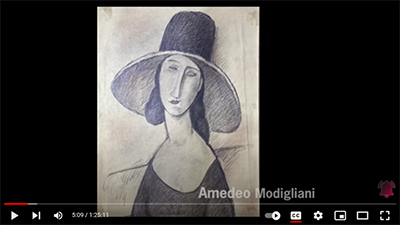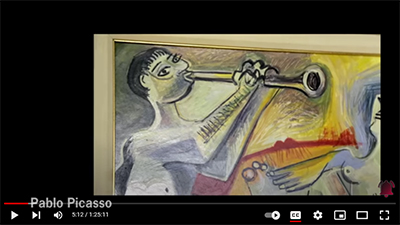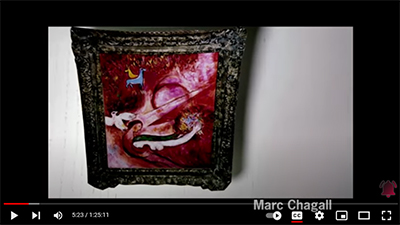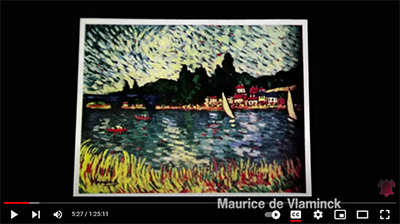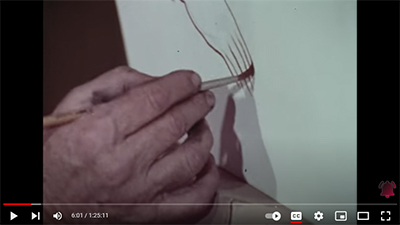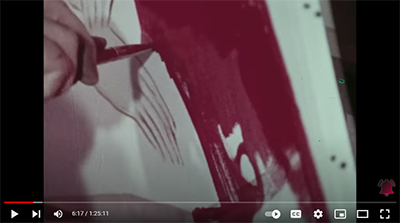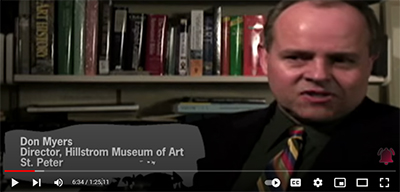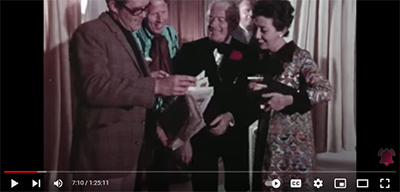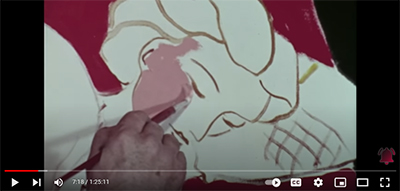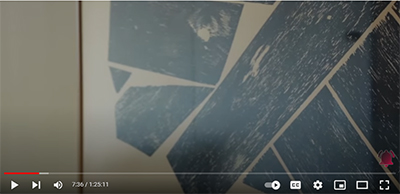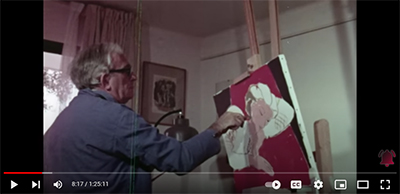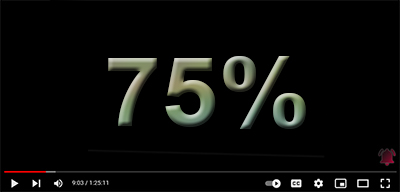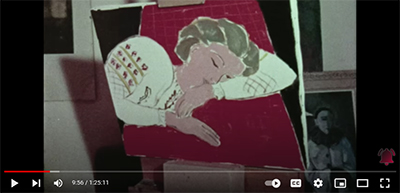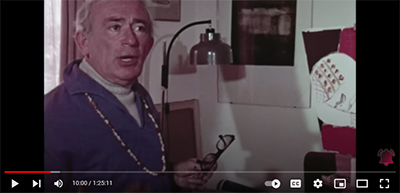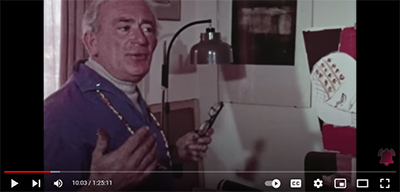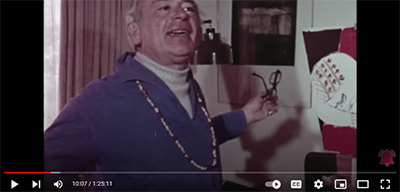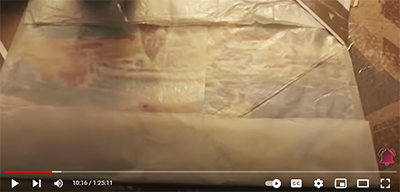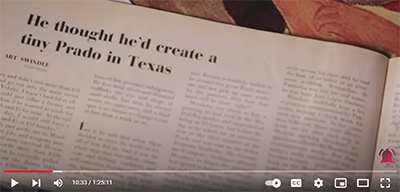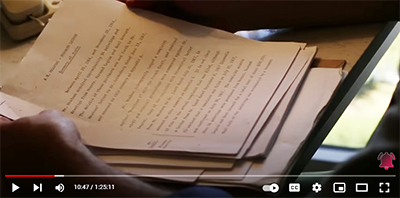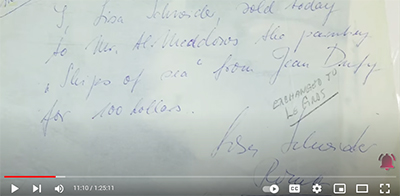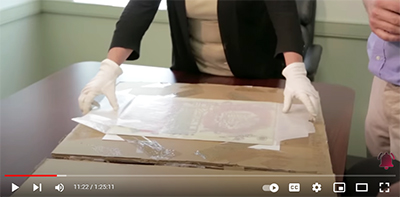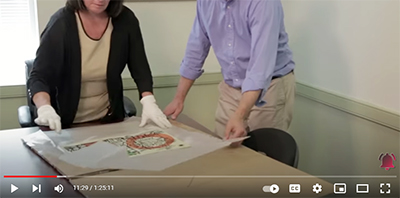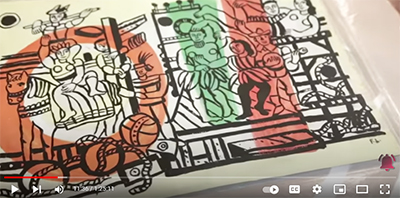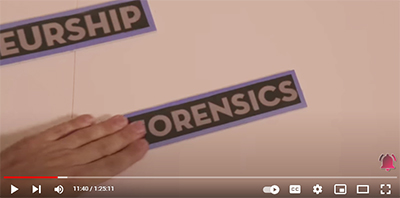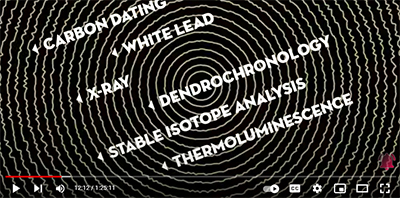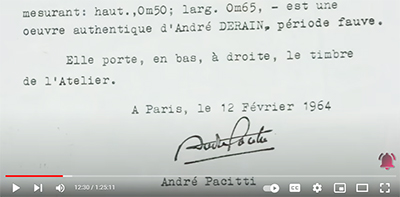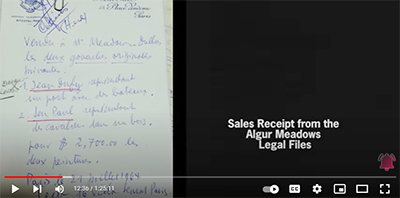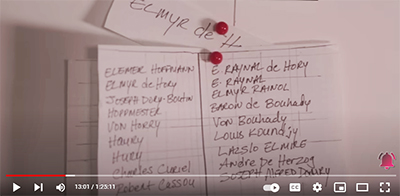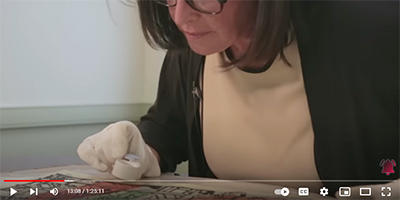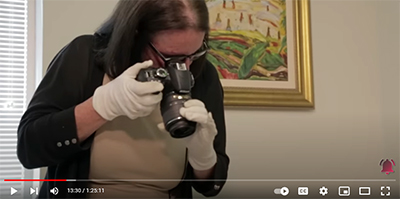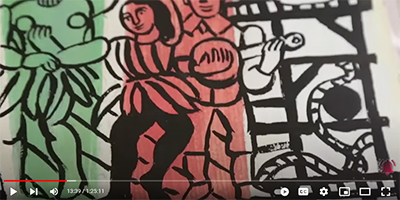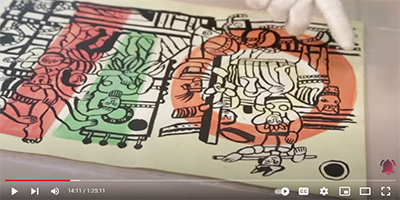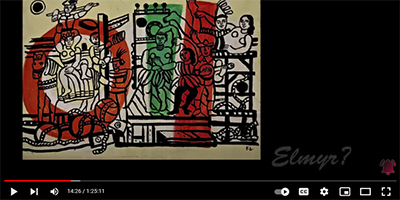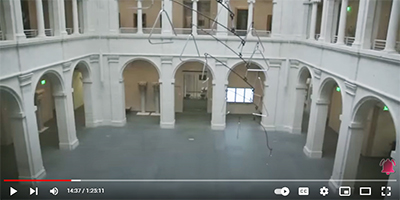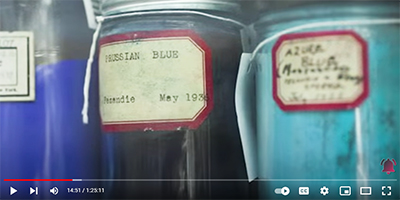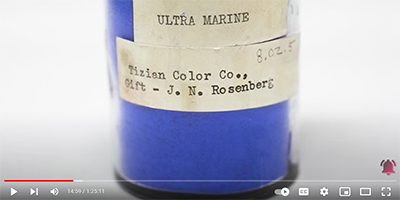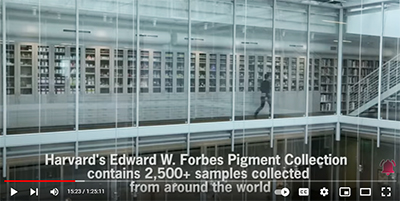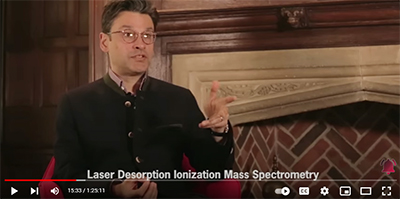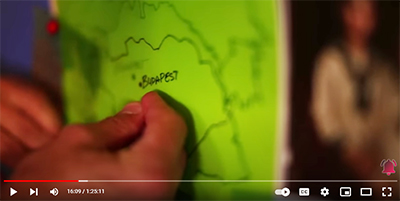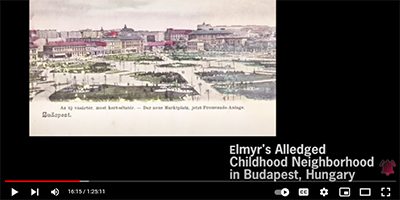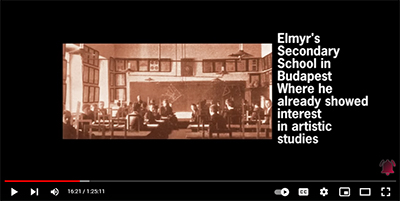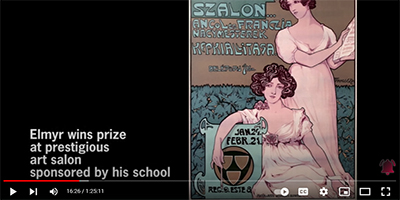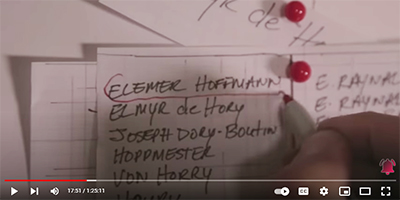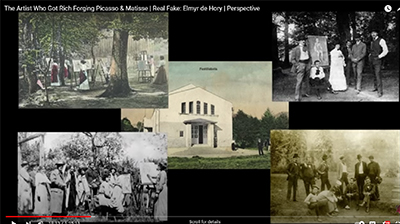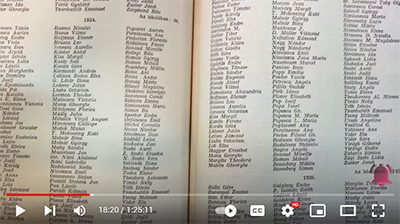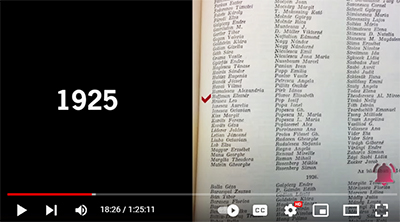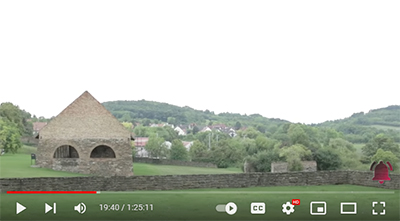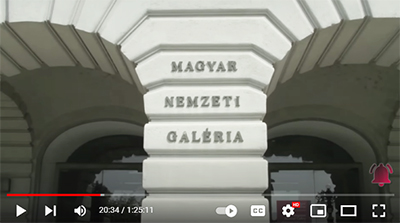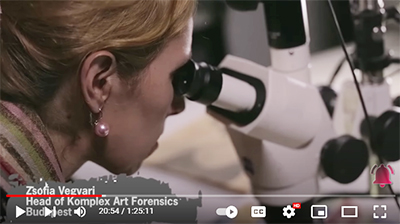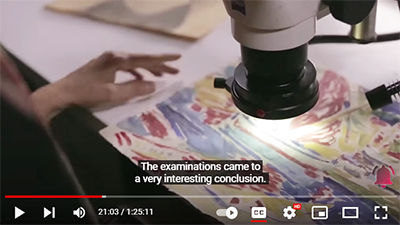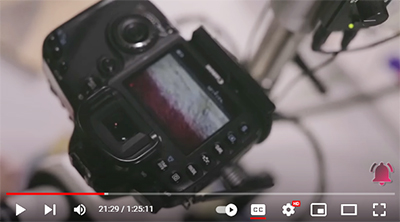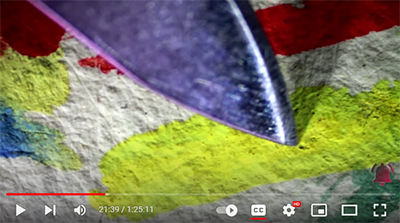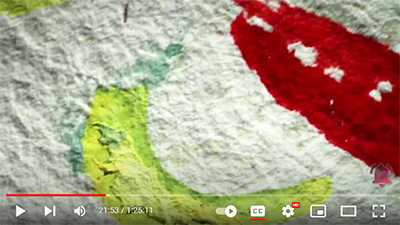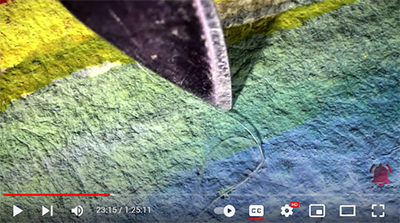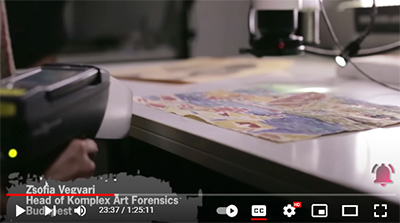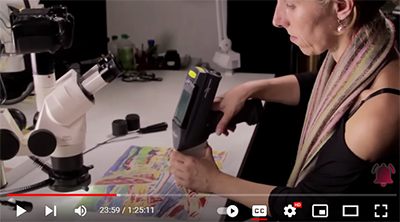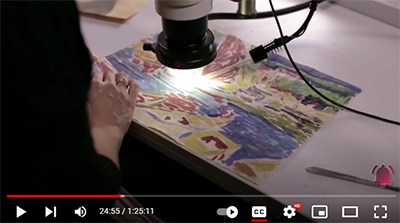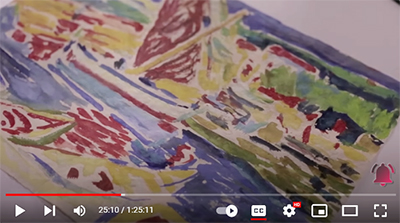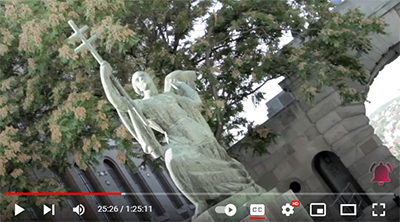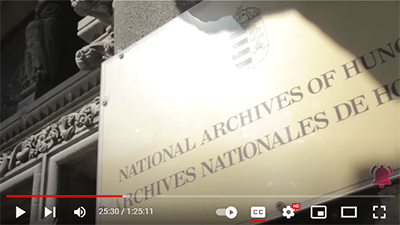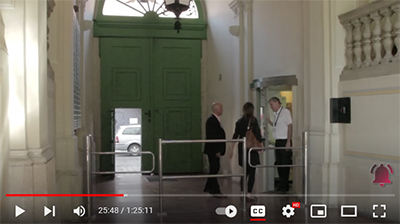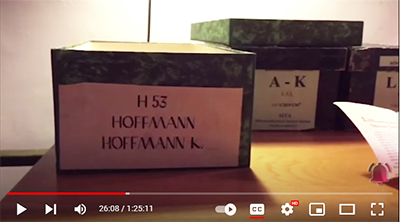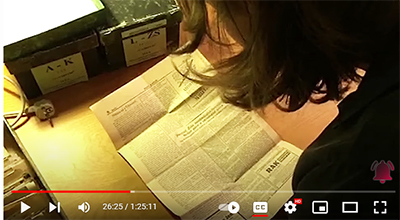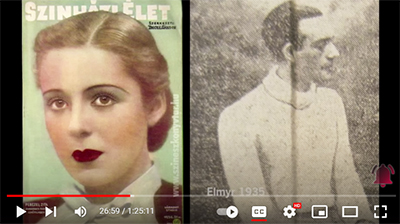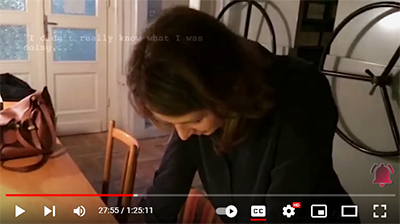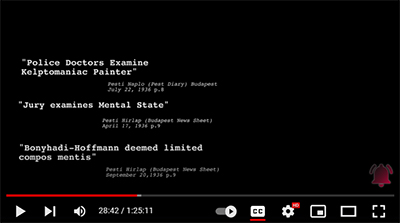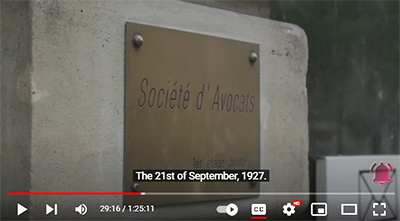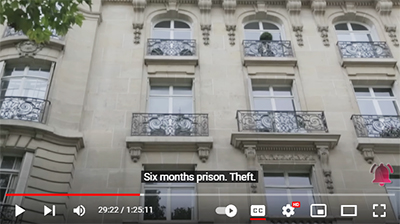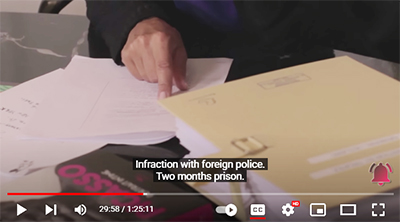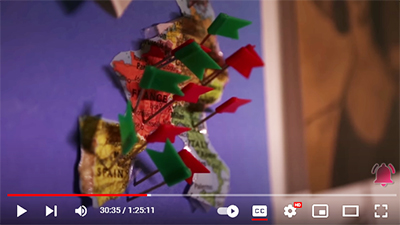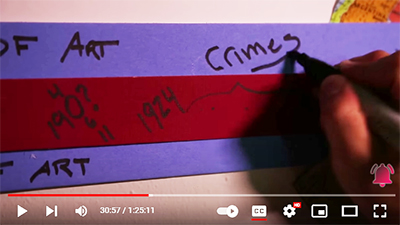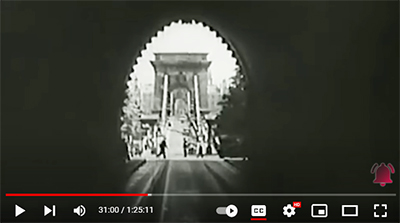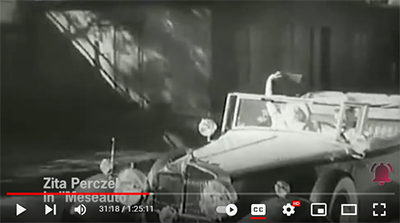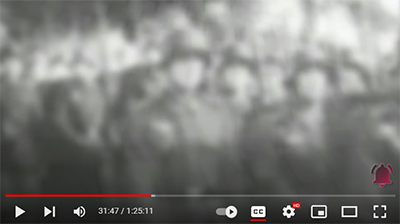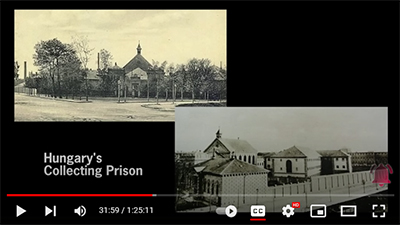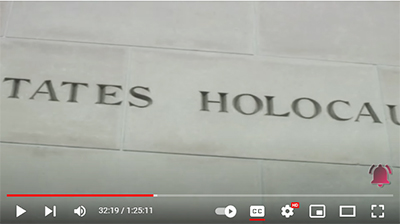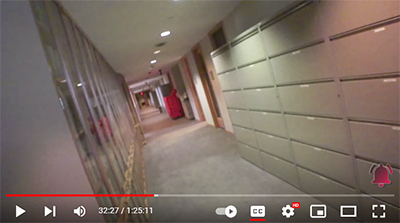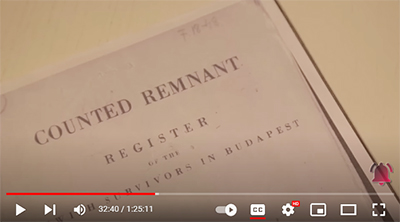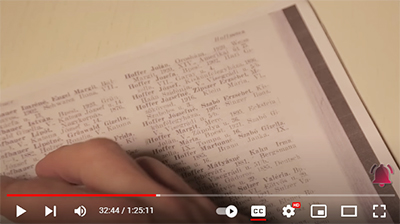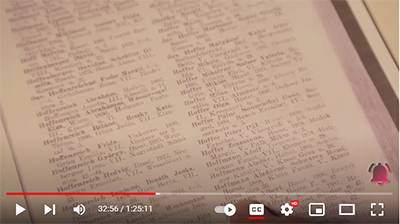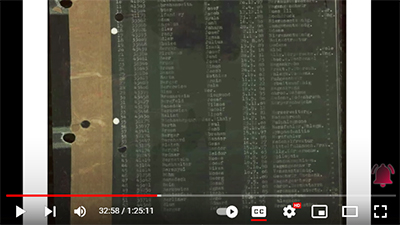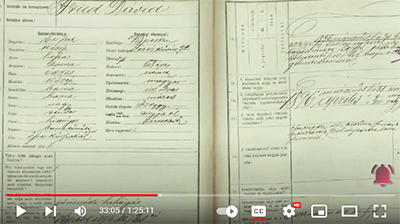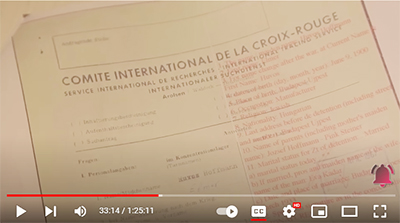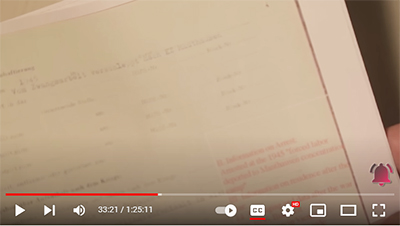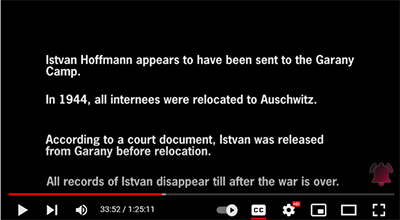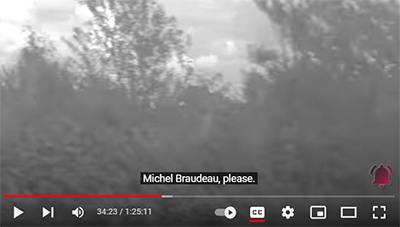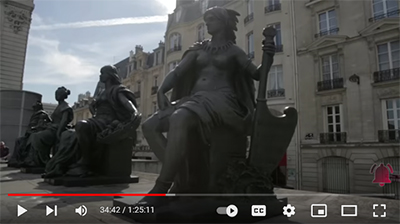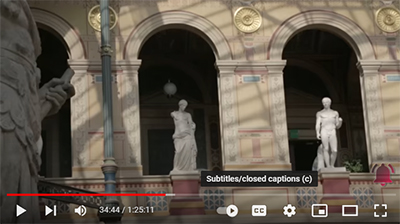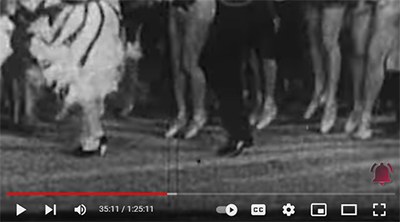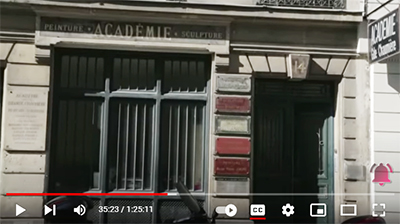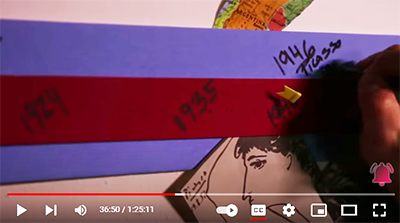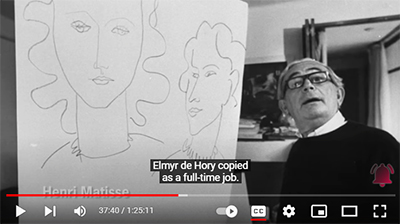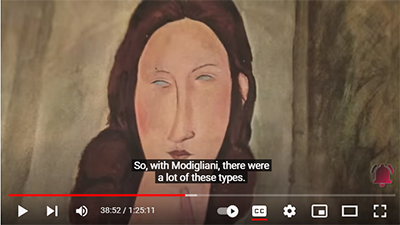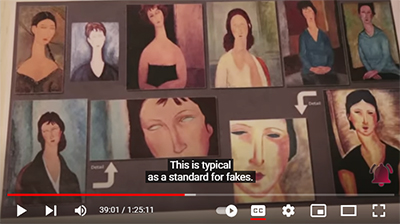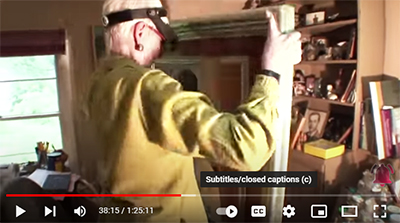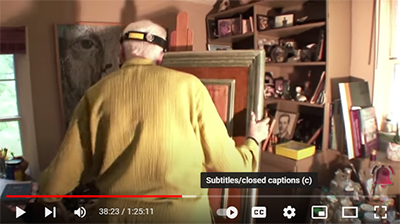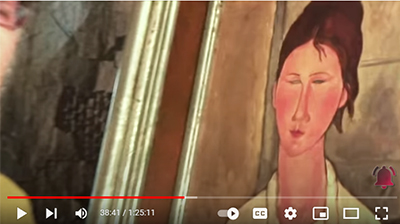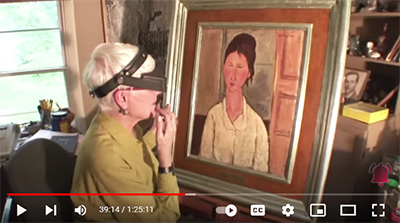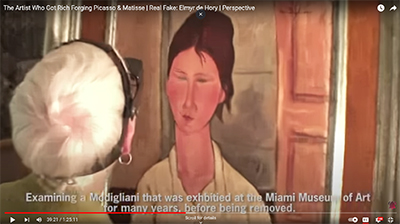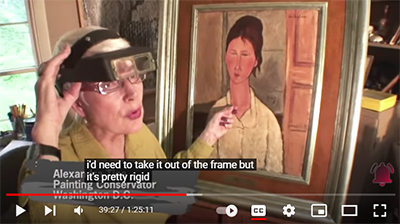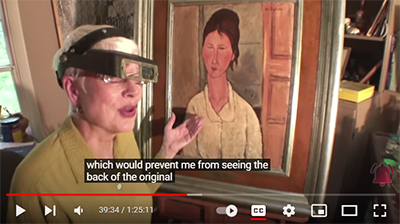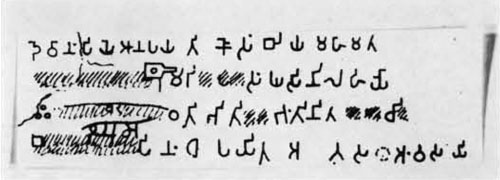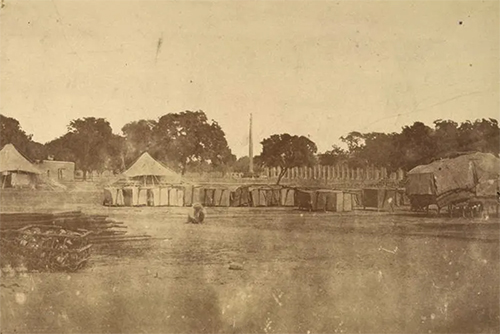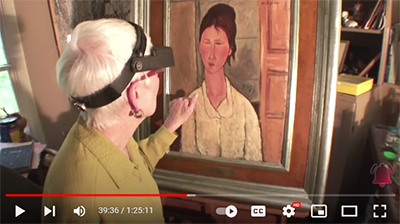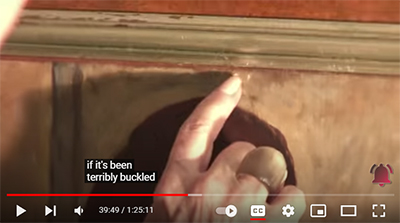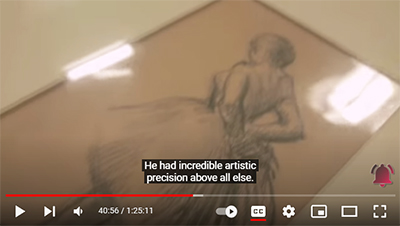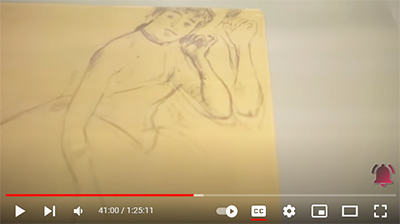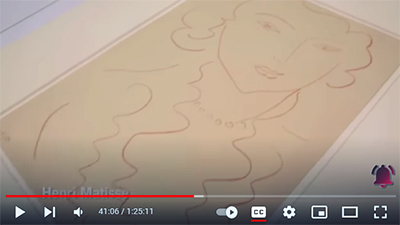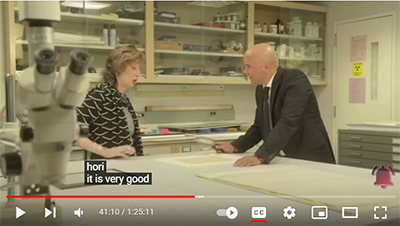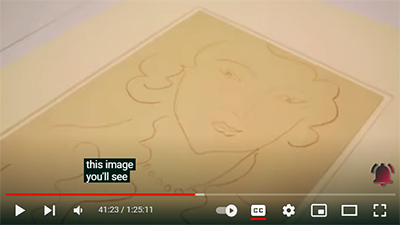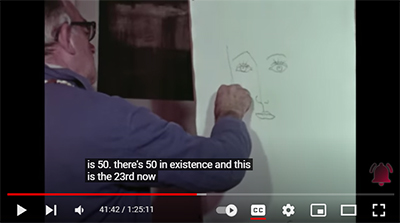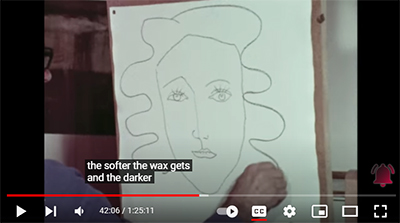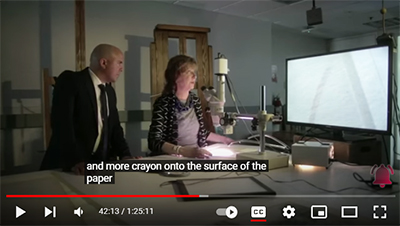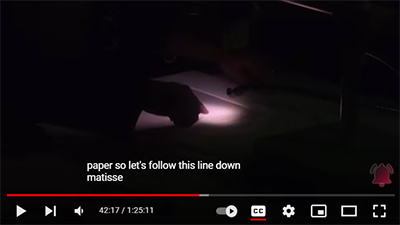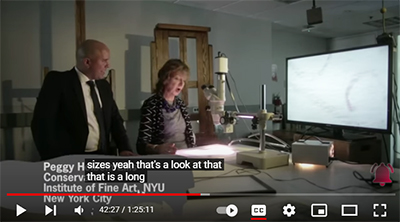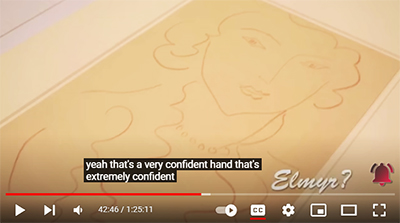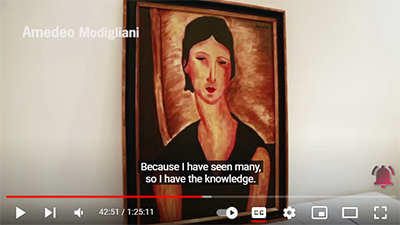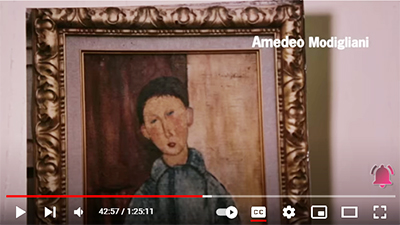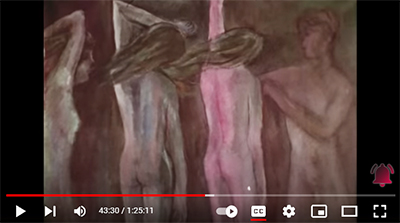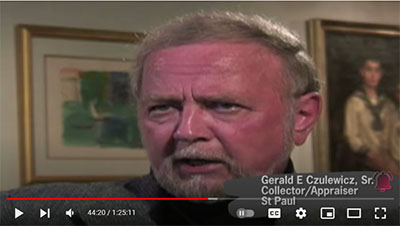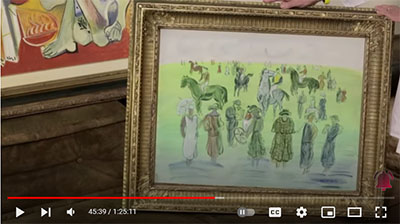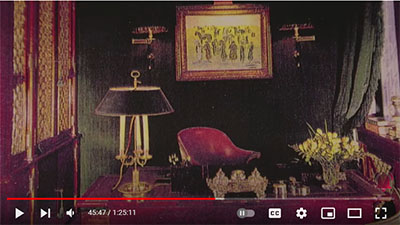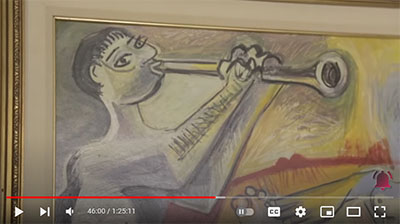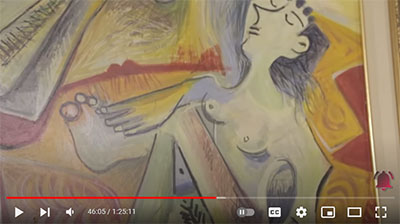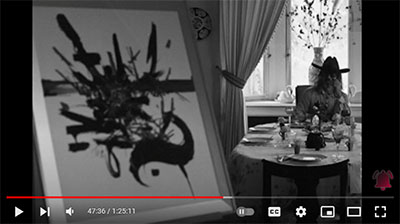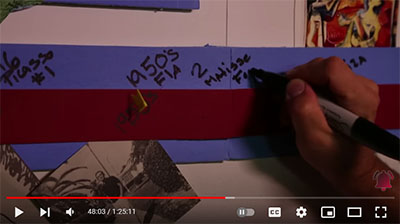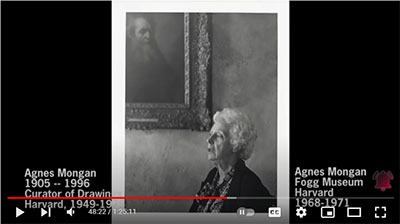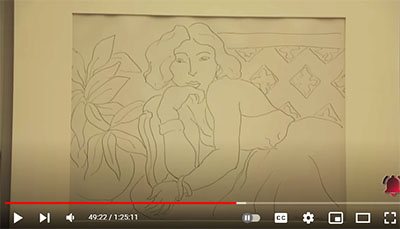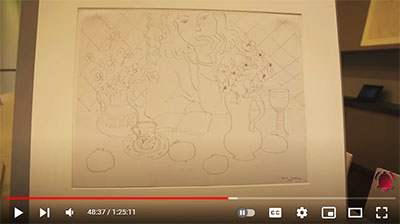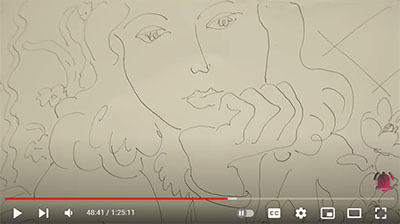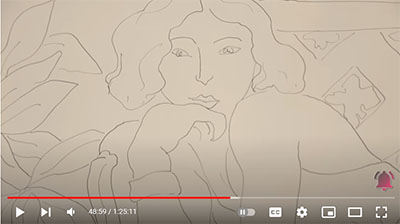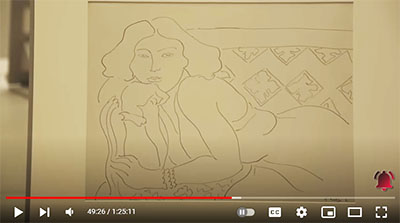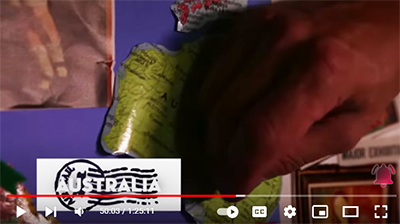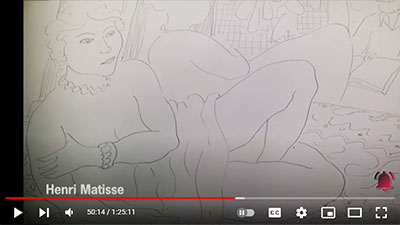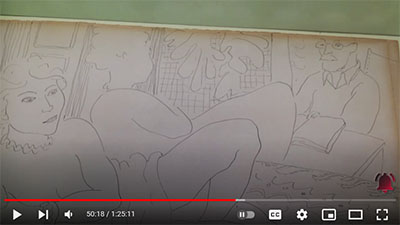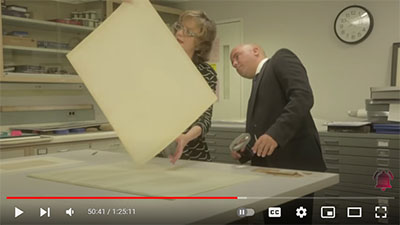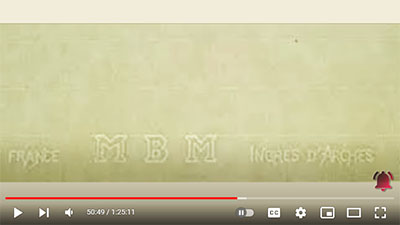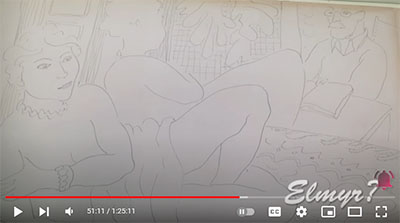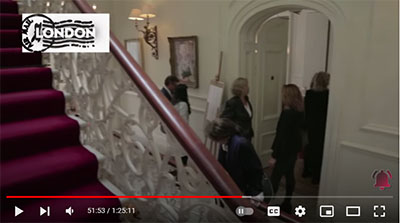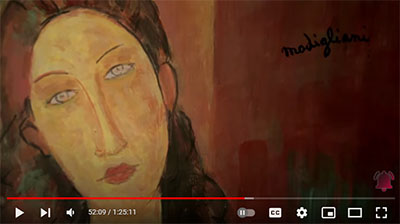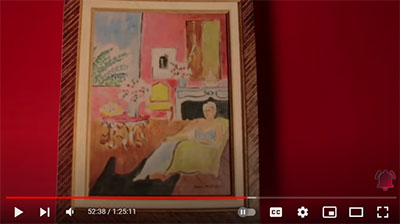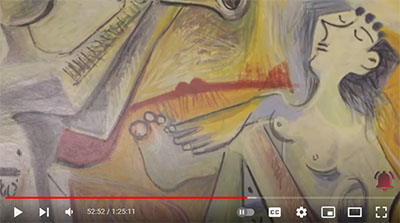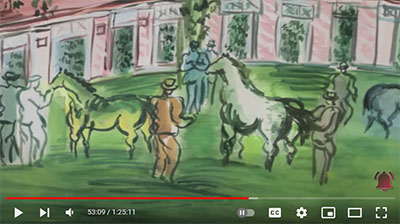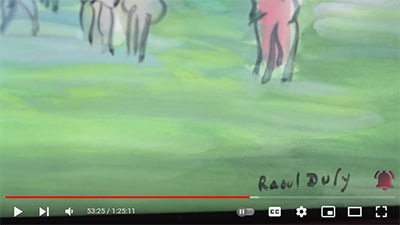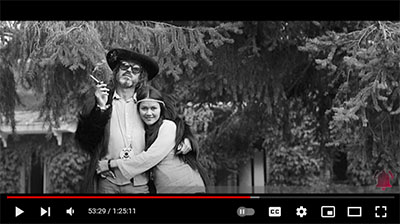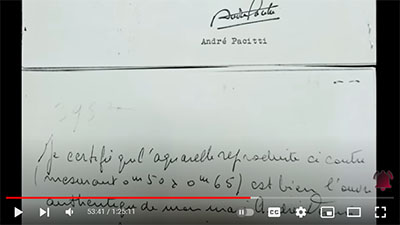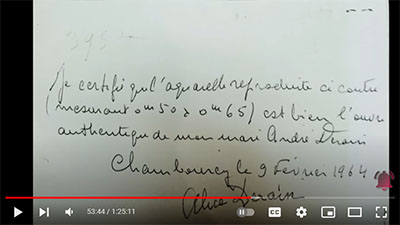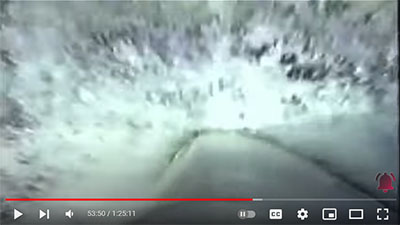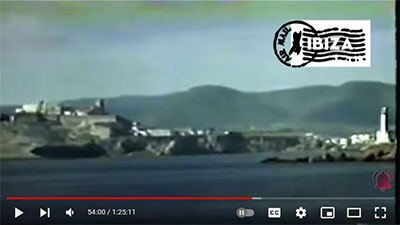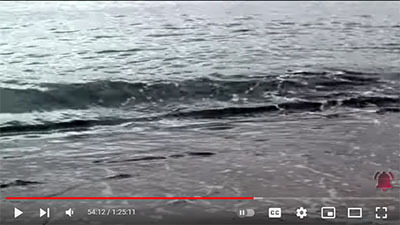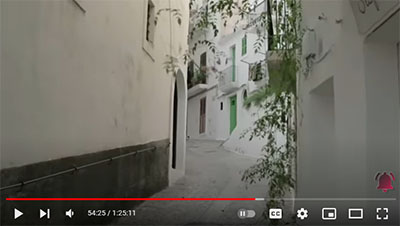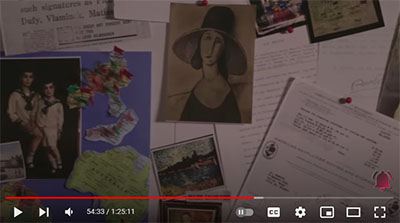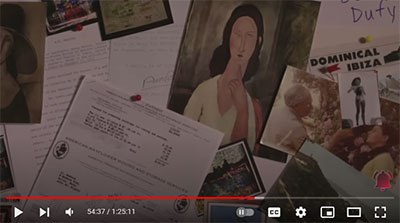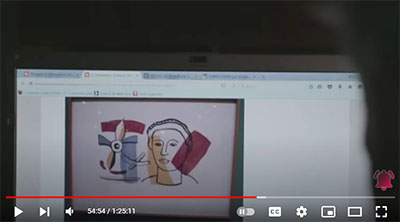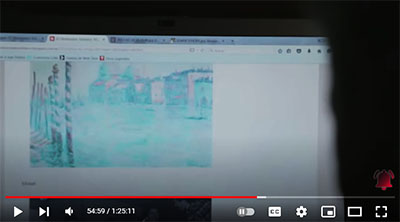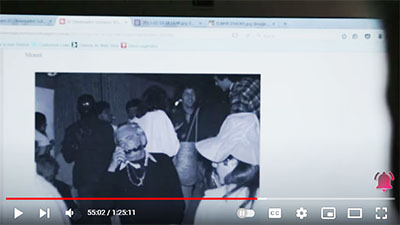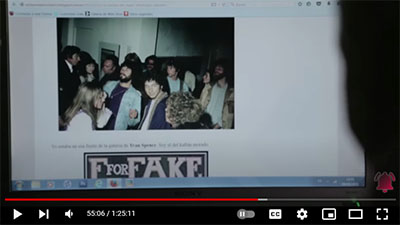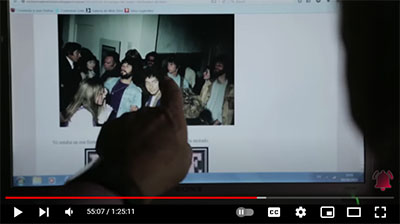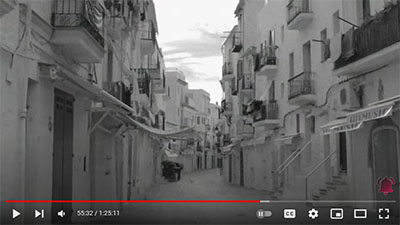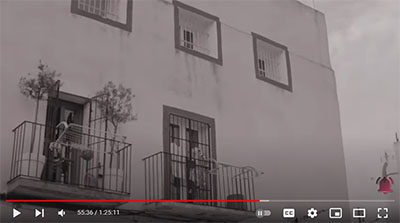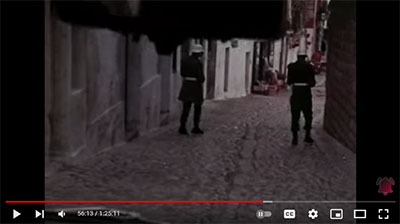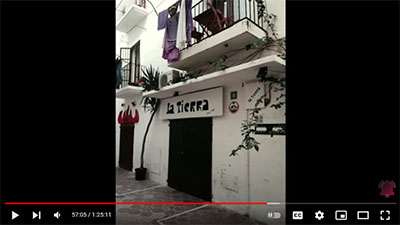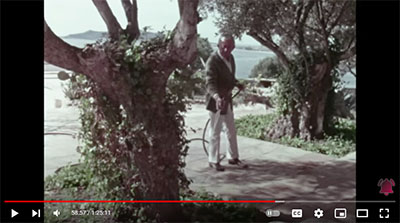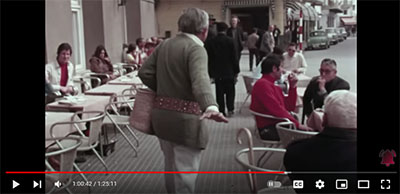by Victor Gysembergh, CNRS, UMR 8061, France
Peter J. Williams, Tyndale House, UK
Emanuel Zingg, Sorbonne Université, France
Journal for the History of Astronomy 2022, Vol. 53(4) 383–393
© The Author(s) 2022
Corresponding author: Victor Gysembergh, CNRS, Centre Léon Robin (UMR 8061), 1 rue Victor Cousin, Paris 75005, France. Email: [email protected]
NOTICE: THIS WORK MAY BE PROTECTED BY COPYRIGHT
YOU ARE REQUIRED TO READ THE COPYRIGHT NOTICE AT THIS LINK BEFORE YOU READ THE FOLLOWING WORK, THAT IS AVAILABLE SOLELY FOR PRIVATE STUDY, SCHOLARSHIP OR RESEARCH PURSUANT TO 17 U.S.C. SECTION 107 AND 108. IN THE EVENT THAT THE LIBRARY DETERMINES THAT UNLAWFUL COPYING OF THIS WORK HAS OCCURRED, THE LIBRARY HAS THE RIGHT TO BLOCK THE I.P. ADDRESS AT WHICH THE UNLAWFUL COPYING APPEARED TO HAVE OCCURRED. THANK YOU FOR RESPECTING THE RIGHTS OF COPYRIGHT OWNERS.
Angelo Mai (Latin Angelus Maius; 7 March 1782 – 8 September 1854) was an Italian Cardinal and philologist. He won a European reputation for publishing for the first time a series of previously unknown ancient texts. These he was able to discover and publish, first while in charge of the Ambrosian Library in Milan and then in the same role at the Vatican Library. The texts were often in parchment manuscripts that had been washed off and reused; he was able to read the lower text using chemicals. [NO CITATIONS!]
In particular he was able to locate a substantial portion of the much sought-after De republica of Cicero and the complete works of Virgilius Maro Grammaticus.
-- by Angelo Mai, by Wikipedia
This year marks twenty years since the first significant efforts were made to use multispectral imaging (MSI) to reveal hidden writing within a parchment manuscript (the book in question contained the lost works of ancient Greek mathematician Archimedes). This noninvasive technology is especially suited for work with parchment, a unique sheet material made from animal skin whose surface can be written upon and then miraculously ‘erased’ by scraping for reuse by a later scribe. In the ancient and medieval Mediterranean world this recycling was common. Texts came and went, but parchment was expensive and always valuable to scribes. Books no longer deemed necessary or desirable were sometimes unbound, and the parchment scraped down and reused to create what is called a palimpsest. Even when the earlier writing was not visible to the naked eye, traces of the ink remained embedded in the parchment sheet, bonded to the collagen and proteins in the skin. Multispectral imaging can reveal traces of this hidden writing.
-- Seeing the Invisible — Multispectral Imaging of Ancient and Medieval Manuscripts, by Dr. Melissa Moreton, Assistant Director for Strategic Initiatives at HMML [2018 to 2020]
Abstract
New evidence for ancient Greek astronomer Hipparchus’ lost Star Catalogue has come to light thanks to multispectral imaging of a palimpsest manuscript and subsequent decipherment and interpretation. This new evidence is the most authoritative to date and allows major progress in the reconstruction of Hipparchus’ Star Catalogue. In particular, it confirms that the Star Catalogue was originally composed in equatorial coordinates. It also confirms that Ptolemy’s Star Catalogue was not based solely on data from Hipparchus’ Catalogue. Finally, the available numerical evidence is consistent with an accuracy within 1° of the real stellar coordinates, which would make Hipparchus’ Catalogue significantly more accurate than his successor Claudius Ptolemy’s.
Keywords
Aratus Latinus, Hipparchus, palimpsest, Ptolemy, star catalogues
Introduction
Hipparchus’ lost Star Catalogue is famous in the history of science as the earliest known attempt to record accurate coordinates of many celestial objects observable with the naked eye.1 However, contrary to Ptolemy’s later Star Catalogue as preserved in the Almagest and Handy Tables, direct evidence for the content of Hipparchus’ is scarce. His only extant work is the Commentary on the Phaenomena, a discussion of earlier writings on positional astronomy by Eudoxus of Cnidus and Aratus of Soli.2 Only a few references in later authors reflect stellar coordinates going back to Hipparchus – these are found mainly in the Aratus Latinus, a Latin translation of Aratus’ astronomical poem Phaenomena and related material. As noted by Neugebauer, the stellar coordinates in the Aratus Latinus agree with Hipparchus’ time, and the codeclination of α UMi in the Aratus Latinus agrees exactly with the value ascribed to Hipparchus by Ptolemy (Geography I, 7, 4).3
Multispectral imaging of the ancient Greek palimpsest known as the Codex Climaci Rescriptus (henceforth CCR) has revealed new evidence for Hipparchus’ Star Catalogue.4 Jamie Klair, then an undergraduate student at the University of Cambridge, first noticed the astronomical nature of the undertext on some folios in 2012, and Peter Williams first observed the presence of astronomical measurements in 2021. Indeed, some of the folios in this manuscript (ff. 47–54 and f. 64) stem from what was originally an ancient codex containing Aratus’ Phaenomena and related material, datable on palaeographic grounds to the fifth or sixth century CE.
Whereas the Aratus Latinus reflects only the Hipparchan boundaries of three circumpolar constellations (UMa, UMi and Dra), the dismembered Aratus codex of which several leaves made their way into CCR appears to have contained similar entries for all constellations. At present, the Hipparchan boundaries of the constellation Corona Borealis can therefore be recovered from the undertext of CCR (which was erased by the 9th or 10th c., when it was re-used to write Syriac translations of texts by John Climacus). No further material reflecting Hipparchan constellation boundaries has yet come to light from CCR; however, although pages stemming from the same codex (i.e. 47v, 49r, 52v and 53r) have not yet revealed legible text, it is possible that more will be recovered in the future.5 It is also possible that folios from the ancient codex are extant in some of the other palimpsests at Saint Catherine’s Monastery of the Sinai.6
Figures 1 to 3 show images of folio 53v at three stages in the multispectral process. Colour versions of the images are available in the online version of the Journal.
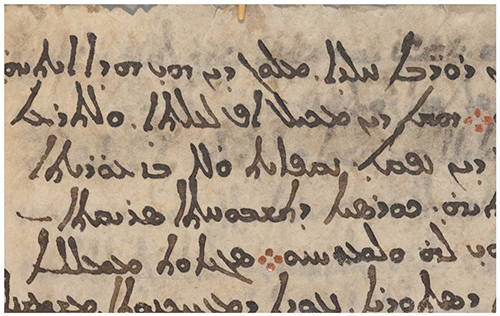
Figure 1. Detail of f. 53v, beginning of the first column of undertext (Syriac overtext in dark brown, and faint traces of a few letters of the undertext). Courtesy Museum of the Bible Collection. All rights reserved. © Museum of the Bible, 2021.
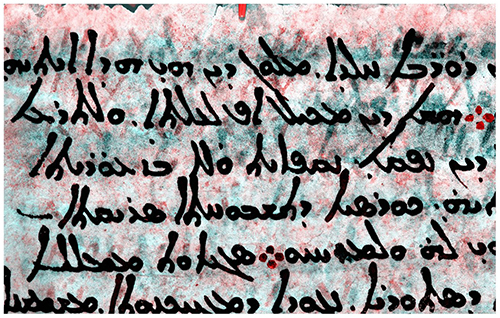
Figure 2. Detail of f. 53v (multispectral image, by the Early Manuscripts Electronic Library and the Lazarus Project of the University of Rochester processed by Keith T. Knox: the enhanced Greek undertext appears in red below the Syriac overtext in black). Courtesy Museum of the Bible Collection. All rights reserved. © Museum of the Bible, 2021.
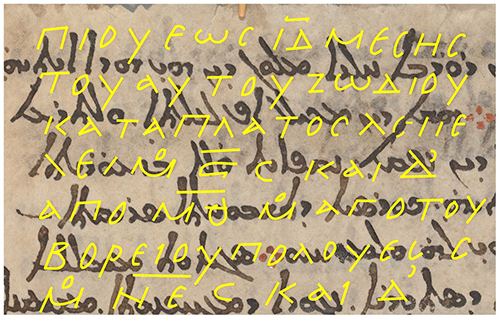
Figure 3. Detail of f. 53v (yellow tracings based on full set of multispectral images). Courtesy Museum of the Bible Collection. All rights reserved. © Museum of the Bible, 2021.
The new evidence for Hipparchus’ Star Catalogue in CCR
We give here a simplified transcription and translation of the relevant sections of the text from 48r and 53v, with our clarifications in parentheses7:
Ὁ στέφανος ἐν τῷ βορείῳ ἡμισφαιρίῳ κείμενος κατὰ μῆκος μὲν ἐπέχει μ̊ θ̅ καὶ δ̅ ́ ἀπὸ τῆς α̅ μ̊ τοῦ σκορπίου ἕως ι̅ <καὶ> δ̅ ́ μ̊ τοῦ αὐτοῦ ζῳδίου. Κατὰ πλάτος δ᾽ ἐπέχει μ̊ ς̅ C καὶ δ̅ ́ ἀπὸ μ̅θ̅ μ̊ ἀπὸ τοῦ βορείου πόλου ἕως μ̊ ν̅ε̅ C καὶ δ̅ ́.
Προηγεῖται μὲν γὰρ ἐν αὐτῷ ὁ ἐχόμενος τοῦ λαμπροῦ ὡς πρὸς δύσιν ἐπέχων τοῦ σκορπίου τῆς α̅ μ̊ τὸ ἥμισυ. Ἔσχατος δὲ πρὸς ἀνατολὰς κεῖται ὁ δ′ ἐχόμενος ἐπ᾽ ἀνατολὰς τοῦ λαμπροῦ ἀστέρος [. . .] τοῦ βορείου πόλου μ̊ μ̅θ̅· νοτιώτατος δὲ ὁ γ′ ἀπὸ τοῦ λαμπροῦ πρὸς ἀνατολὰς ἀριθμούμενος ὃς ἀπέχει τοῦ πόλου μ̊ ν̅ε̅ C καὶ δ̅ ́.
Corona Borealis, lying in the northern hemisphere, in length spans 9°¼ from the first degree of Scorpius to 10°¼8 in the same zodiacal sign (i.e. in Scorpius). In breadth it spans 6°¾ from 49° from the North Pole to 55°¾.
Within it, the star (β CrB) to the West next to the bright one (α CrB) leads (i.e. is the first to rise), being at Scorpius 0.5°. The fourth9 star (ι CrB) to the East of the bright one (α CrB) is the last (i.e. to rise) [. . .]10 49° from the North Pole. Southernmost (δ CrB) is the third counting from the bright one (α CrB) towards the East, which is 55°¾ from the North Pole.
The first section states the extension of the constellation in μῆκος (‘length’) and πλάτος (‘breadth’), expressed for each as a value in degrees equal to the difference by two extremal coordinates. The second section names the stars at each extremity and repeats their extremal coordinates, thus mapping out the smallest spherical rectangle containing all the stars considered part of the constellation. Thus, it seems likely that the numerical data in the first section were originally derived from the coordinates in the second section. The concept of constellation boundaries underlying both sections is both similar to and different from its present-day analogue: these boundaries are drawn along vertical lines of right ascension and horizontal parallels, like today, but they make up simple rectangles instead of the intricate shapes introduced by Eugène Delporte (1882–1955).
Let us now discuss the numerical values given in the text. First, we need to explain the text’s unusual terminology. The term ‘length’ expresses the East-West extension of a constellation, while ‘breadth’ expresses its North-South extension. Position on a North- South axis is expressed as an angle ‘from the North Pole’ (like codeclination in an equatorial coordinate system). Position on an East-West axis is expressed by the combination of a zodiacal sign, which refers to a 30° arc (e.g. Scorpius for 210°–240°), and of a figure in degrees and fractions of degrees, which specifies the position within this arc. Thus, ‘the first degree of Scorpius’, which in principle refers to the interval between 0° exclusive and 1° inclusive, is equivalent here to the modern notation 211° (yielding a total East-West extension of 9°¼, as stated in the Greek text).
The northernmost and southernmost boundaries of CrB are stated twice in no uncertain terms. The easternmost and westernmost boundaries are more problematic. The corrupt passage about the easternmost boundary contains the numerals for 10 (ι) and 4 (δ), and can easily have derived from an original 10°¼. Indeed, in ancient Greek numerical notation, the confusion of a number and its reciprocal was frequent, because the sign denoting the fraction, the keraia, was slight: thus, δ′ (=¼) and δ (=4) were easily confused. The westernmost boundary is indicated first as being at 211°, then as being at 210°½. The first figure is consistent with an East-West extension of 9°¼ (assuming the correction 10°¼ mentioned above), and seems preferable at first glance. However, 210°30′ is the value indicated in Hipparchus’ Commentary (III, 5, 8, p. 274 Manitius) for the right ascension of β CrB, and must therefore be preferred. The figure 211° may easily have arisen through a copying error; and ensuingly, the East-West extension may have been corrected from an original 9°¾ to restore consistency with the position of the westernmost boundary. Assuming this interpretation of the discrepancy regarding the westernmost boundary, the boundaries of CrB are summarised in Table 1.
These coordinates are accurate to within 1° for the epoch of Hipparchus’ star catalogue (ca. 129 BCE),11 as can be verified with planetarium software such as Stellarium or by checking against Dennis Duke’s and Gerd Graßhoff’s lists of equatorial coordinates for the time of Hipparchus.12 Furthermore, they confirm that Hipparchus’ star catalogue was composed in equatorial, not ecliptical, coordinates, which has long been a matter of contention.13 It should be noted that the terminology of μῆκος (‘length’) and πλάτος (‘breadth’) is unusual for astronomical coordinates in an equatorial, not ecliptical, frame of reference. The practice of expressing right ascension with the combination of an artificial zodiac sign and a number of degrees is also highly unusual, and attested only in Hipparchus’ Commentary.14 The matching astronomical epoch and terminology provide strong evidence that the coordinates in CCR originated with Hipparchus.
Reassessing the evidence for Hipparchus’ Star Catalogue in Aratus Latinus
By providing comparative material, the Greek text also allows a better understanding of the related sections in the Aratus Latinus (henceforth also AL). AL is an early medieval translation into Latin, made in Northern France (most probably in Corbie Abbey) in the 8th c., of a Greek codex containing the Phenomena of Aratus and related material.15 In particular, AL contains sections on the boundaries of the circumpolar constellations, the Greek original of which now appears to have followed the same structure and terminology as the section on Corona Borealis in the CCR text.16
Hipparchus had already been identified as the ultimate source of the coordinates in these sections of AL over a century ago by Georg Dittmann, based on the observation that the codeclination of β UMi matches the figure quoted by Ptolemy in his Geography (I, 7, 4).17 Emanuel Gürkoff and Otto Neugebauer further discussed the philological issues at hand.18 However, evidence from AL has only received passing mention in scholarly discussion of Hipparchus’ and Ptolemy’s Star Catalogues.19 It would go beyond the scope of this paper to discuss at length the philological issues in these passages, where the vagaries of textual transmission are compounded by the translator’s imperfect knowledge of Greek.20 But it is of interest to summarise the numerical information about the boundaries of the circumpolar constellations Ursa Major, Ursa Minor and Draco according to Hipparchus that can be recovered from the Aratus Latinus.
Table 1. Boundaries of Corona Borealis according to CCR.
-- / α (right ascension) / Δ (codeclination)
β CrB / 210°30′ / --
π CrB / -- / 49°
δ CrB / -- / 55°45′
ι CrB / 220°15′ / --
Ursa Major
The text of Aratus Latinus indicates a North-South extension of 23° for Ursa Major, where 21°½ is expected, as shown by Table 2.
Ursa Minor
The text of Aratus Latinus indicates an East-West extension of 97°, presumably due to a scribal error for 107°; and a North-South extension of 1°½, presumably due to a common uncial error in the Greek text for 4°½. See Table 3.
Draco
The text of Aratus Latinus indicates a North-South extension of 27° (following manuscript P), which is consistent with the figures for γ and κ Dra. See Table 4.
In order to recover coordinates in Hipparchus’ Star Catalogue, the Aratus Latinus material is possibly more reliable than Hipparchus’ Commentary, as it comes from manuscripts that are earlier than the earliest known manuscript of the Commentary (11th c.). Recent study of the indications about the number of stars per constellation has shown that numerals in Aratus Latinus are highly reliable, agreeing in 28 of 34 cases (i.e. over 82% of the time) with the original number of stars per constellation in the Hipparchan catalogue, where this number can be reconstructed.21 At any rate, AL and CCR provide evidence for Hipparchus’ Star Catalogue that is independent from Hipparchus’ Commentary.
Table 2. Boundaries of Ursa Major according to Aratus Latinus.
-- / α / Δ
ο / W / 78°30′ / --
α / N / -- / 18°30′
μ / S / -- / 40°
η / E / 180° or 185° / --
Table 3. Boundaries of Ursa Minor according to Aratus Latinus.
-- / α / Δ
α / E/S / 347° / 12°24′
β N / -- / 8°
γ / W / 240° / --
Comparison with coordinates from Hipparchus’ Commentary
For eight of the stars figuring in CCR and AL, either right ascension, codeclination or both are also indicated in Hipparchus’ Commentary (noted αComm and Δcomm in Table 5). Remarkably, the values indicated for these stars in the Commentary mostly agree with those given in CCR and Aratus Latinus (values given in the Commentary were collected by Marx 202022 and checked by the present authors; bold font indicates values present both in the Commentary and in CCR/AL).
Out of seven cases where the same coordinate is indicated in the Commentary and CCR/AL, perfect agreement is observed in four cases. In two of the three cases where a discrepancy is observed, the text in Aratus Latinus is so corrupt that it is impossible to decide what the original figure was. Finally, in one case, concerning the right ascension of α UMi, a discrepancy of one degree is observed. This high rate of consistency suggests that both the Commentary and the CCR/AL material ultimately go back to the same source text, and thus confirms the common assumption23 that Hipparchus’ Commentary was written after his Star Catalogue.
In two cases, the CCR/AL material contains the codeclination of a star for which the Commentary material only provides the right ascension. In these two cases (β UMi and α UMa), we can thus form coordinate pairs. We therefore have two further test cases for the hypothesis that Ptolemy’s Star Catalogue was obtained by systematically adding a precession constant to each star’s ecliptic coordinates according to Hipparchus. If this hypothesis is correct, we should expect Hipparchus’ coordinates for β UMi and α UMa to be possibly rounded numbers near (α = 238°; Δ = 8°25′) and (α = 121°46′; Δ = 18°49′).24 Thus, in the case of β UMi, Ptolemy clearly didn’t merely add a precession constant to Hipparchus’ coordinates, but either made his own observations or used sources independent from Hipparchus. In the case of α UMa, on the other hand, Ptolemy may well have been dependent upon Hipparchus’ star catalogue.
Table 4. Boundaries of Draco according to Aratus Latinus.[/ ]
-- / -- / α / Δ
γ / S / -- 37°
ε / E / 298°/ --
κ / N / -- / 10°
λ / W / 121°? 124°? / --
Table 5. Star coordinates given in both Hipparchus’ Commentary and CCR or Aratus Latinus.
-- / αComm / ΔComm / α / Δ
α UMi / 348° / 12°24′ / 347° / 12°24′
β UMi / 240° / – / – / 8°
γ UMi / 240° / – / 240° / –
α UMa / 122° / – / – / 18° / 30′
η UMa / 184° / – / 180° or 185° / –
γ Dra / – / 37° / – / 37°
λ Dra / 123° / – / 121°? 124°?/ –
β CrB / 210°30′ / - / 210°30′ / -
The accuracy of Hipparchus’ Star Catalogue and its relationship with Ptolemy’s
In the above tables, where two possible figures have been indicated due to textual difficulties, at least one of these figures is accurate to within 1° for Hipparchus’ time; elsewhere, all coordinates are accurate to this extent. This level of accuracy is remarkable, because, by analogy with Ptolemy’s Star Catalogue, one would expect some large errors, that is, larger than 1°.25 Incidentally, such a high level of accuracy may have contributed to the survival of material from Hipparchus’ Star Catalogue long after Ptolemy’s Almagest became the standard handbook of mathematical astronomy in the Greek world. However, the sample size being relatively small, it is also possible that there were large errors in parts of Hipparchus’ Star Catalogue that were not preserved by CCR and Aratus Latinus.
It is also remarkable that the coordinates from CCR and Aratus Latinus are not consistent with the hypothesis that the data in Ptolemy’s Star Catalogue were arrived at simply by applying a precession constant to Hipparchus’ data. This can be shown by Table 6, where Hipparchus’ data are compared with the Almagest coordinates adjusted for precession to 129 BCE, denoted αAlm and ΔAlm.26 (Figures in italics are not attested in Hipparchus’ Commentary.)
If Ptolemy had converted Hipparchus’ equatorial coordinates to ecliptic coordinates and then added 2°40′ to the longitudes, we would expect columns 2 and 3 of Table 6 to be reasonably close to columns 4 and 5. Of course, Ptolemy rounds his coordinates to intervals of 1/6° or ¼°. Thus, discrepancies of up to 10′ or 15′ would not be inconsistent with such a direct use of Hipparchus’ data. But, as can be seen from the last two columns of the table, many of the differences are substantially greater than this. These observations are consistent with the view that Ptolemy composed his Star Catalogue by combining various sources, including Hipparchus’ Catalogue, his own observations and, possibly, those of other authors. Indeed, it would follow from this that Hipparchus’ Catalogue may have been considerably more accurate than Ptolemy’s, that is, with a significantly higher rate of coordinates accurate to within less than 1°. This would be consistent with the evidence from CCR and Aratus Latinus, where potentially 100% of coordinates are accurate to within less than 1°.
The comparatively small sample size and the philological issues in both CCR and Aratus Latinus prevent us from analysing the distribution of errors in Hipparchus’ catalogue. Therefore, we cannot draw any further conclusions about the methods and instruments used by Hipparchus to observe the firmament. Considering the equatorial coordinate format, it seems safe to assume nevertheless that, if his observations were conducted with an armillary sphere, this must have been an equatorial armillary sphere, and not an ecliptic armillary sphere like Ptolemy’s; however, it is also possible that the measurements were taken with a dioptra, which may have been easier to operate.27
Table 6. Comparison of star coordinates from Hipparchus’ Star Catalogue and Ptolemy’s.
-- / α / Δ / αAlm / ΔAlm / |α−αAlm| / |Δ−ΔAlm|
α UMi / 347° / 12°24′ / 345°41′ / 13°02′ / 1°19′ / 38′
β UMi / -- / 8° / -- / 8°25′ / -- / 25′
γ UMi / 240° / -- / 238°36′ / -- / 1°24′ / --
ο UMa / 78°30′ / -- / 77°22′ / -- / 1°8′ / --
α UMa / -- / 18°30′ / -- / 18°49′ / -- / 19′
μ UMa / -- / 40° / -- / 40°09′ / -- / 9′
η UMa 180° or 185° / -- / 184°8′ / -- / (4°)52′ / --
γ Dra / -- / 37° / -- / 36°49′ / -- / 11′
ε Dra / 298° / -- / 296°50′ / -- / 1°10′ / --
κ Dra / 10° / -- / 8°46′ / -- / 1°14′
λ Dra / 121°? 124°? / -- / 121°47′ / -- /47′ or 2°13′ / --
β CrB / 210°30′ / -- / 209°58′ / -- /32′ / --
π CrB / -- / 49° / -- / 48°58′/ -- / 2′
δ CrB / -- / 55°45′ / -- / 55°43′ / -- / 2′
ι CrB / 220°15′ / -- / 219°6′ / -- / 9′ / --
ORCID iD
Victor Gysembergh https://orcid.org/0000-0003-1633-9212
Notes on Contributors
Victor Gysembergh is a CNRS research professor at the Centre Léon Robin (Sorbonne Université). He is currently working on an edition of the fragments of Eudoxus of Cnidus, as well as on editions of Claudius Ptolemy’s treatise On the Analemma and his recently discovered treatise on the Meteoroscope.
Peter J. Williams is Principal of Tyndale House, Cambridge, and is a biblical philologist who has been leading the research team investigating the Aramaic and Greek underwriting of Codex Climaci Rescriptus.
Emanuel Zingg is a postdoctoral researcher at the Centre Léon Robin (Sorbonne Université) in Paris. He is currently working on editions of Ptolemy’s treatise On the Analemma and his recently discovered treatise on the Meteoroscope.
Notes
1. G.J. Toomer, “Hipparchus,” in C.C. Gillispie (ed.), Dictionary of Scientific Biography, Supplement I (New York, NY: C. Scribner’s Sons, 1978), pp. 207–24.
2. K. Manitius, Hipparchi in Arati et Eudoxi Phaenomena Commentariorum libri tres (Leipzig, 1894).
3. O. Neugebauer, A History of Ancient Mathematical Astronomy, Vol. 1 (Berlin-Heidelberg; New York, NY: Springer-Verlag, 1975), pp. 288–91.
4. CCR consists of 146 folios, one of which is part of the Mingana Collection, Birmingham, under shelfmark MSyr637, and eight of which are kept at St Catherine’s Monastery of the Sinai under shelfmark Syriac NF 38. The remaining 137 folios, including those with undertext from an ancient codex of Aratus’ Phaenomena, were given by Agnes Smith Lewis, who acquired them in Egypt between 1895 and 1906, to Westminster College, Cambridge, which sold them to the Green Collection in 2010. In 2012, the Green Collection donated these folios to the Museum of the Bible in Washington, D.C., where they are now kept under shelfmark MS.000149.
After several stages of imaging, the Early Manuscripts Electronic Library and the Lazarus Project captured the most recent multispectral data in July 2017 and provided processed images that contributed decisively to decipherment. They used a MegaVision spectral system that featured an E7 50MP digital back, a 120mm macro lens that is apochromatic across all captured wavelengths, and, for transmissive imaging, a multispectral light sheet. They took 42 shots of each page: 16 shots capturing the reflection of light emitted at 365 nm, 420 nm, 450 nm, 470 nm, 505 nm, 530 nm, 560 nm, 590 nm, 615 nm, 630 nm, 655 nm, 700 nm, 735 nm, 780 nm, 870 nm and 940 nm; 4 shots capturing the transmission through the parchment of light emitted at 500 nm, 580 nm, 735 nm and 940 nm; and 22 shots capturing fluorescence caused by light emitted at 365 nm, 385 nm, 400 nm and 450 nm (at the first three wavelengths, six different filters were used, i.e. blue, green, orange, red, UV pass and UV block; at 450 nm, the same were used except UV pass and UV block). Additional bands were captured of a small number of folios for experimental purposes.
For further details on this manuscript and its imaging, see P.J. Williams et al., “Newly- Discovered Illustrated Texts of Aratus and Eratosthenes Within Codex Climaci Recriptus,” The Classical Quarterly 72 (2022), forthcoming.
5. For a full publication of the astronomical undertexts recovered until now, see Williams et al., op. cit. (Note 4).
6. Saint Catherine’s Monastery of Mount Sinai is the home of over 160 palimpsests, which also underwent multispectral imaging by the Early Manuscripts Electronic Library; the processed images are available at https://sinai.library.ucla.edu/.
7. For philological discussion, see Williams et al., op. cit. (Note 4).
8. Here the text in the manuscript is corrupt, but it is possible to reconstruct the original numeral 10¼ on paleographic grounds (see below). In this passage we also correct the transmitted text μέ̣σ̣η̣ς̣ (‘half’) after the numeral to μ̊ (abbreviation for ‘degree’), because all other numerals in the text are followed by the indication of units.
9. The Greek has the particle δέ, but this does not make sense. The corrupt text can easily be restored by correcting δέ to δ′, the ordinal numeral “fourth”; the text counts inclusively, as shown further down by the ordinal number “third” for the southernmost star δ CrB.
10. The text here (end of folio 53v col. i) is too damaged to be deciphered. Based on the structure of the section, it is clear that it contained the extremal coordinate associated with ι CrB, which should be Scorpius 10°1/4 as in the first section, and the designation of the northernmost star in the constellation, which should be π CrB.
11. The epoch of Hipparchus’ star catalogue is commonly determined as approximately 129 BCE = −128 because Ptolemy (Almagest VII, 2) states that about 265 years elapsed between Hipparchus’ measurement of the position of Regulus and the beginning of the reign of Antoninus (137 CE), which would place Hipparchus’ observation in about 137 – 265 = −128.
12. Stellarium is a planetarium freeware available at https://stellarium.org/. Dennis Duke’s table of equatorial coordinates for 129 BCE is available at https://people.sc.fsu.edu/~dduke/ asc129bc-eq.xlsx, accessed 4 July 2022. Gerd Graßhoff’s table of coordinates for 129 BCE is published in G. Graßhoff, The History of Ptolemy’s Star Catalogue (Berlin-Heidelberg; New York, NY: Springer, 1990), Appendix B, pp. 275–316.
13. See D.W. Duke, “Hipparchus’ Coordinate System,” Archive for the History of Exact Sciences, 56 (2002), 427–33 (with references to earlier literature).
14. See Duke, op. cit. (Note 13), p. 428 and n. 9.
15. See H. Le Bourdellès, L'Aratus Latinus (Lille: Presses universitaires du Septentrion, 1985), esp. 251–63.
16. The relevant sections in Aratus Latinus were edited by E. Maass, Commentariorum in Aratum reliquiae (Berlin, 1898), pp. 183–9.
17. G. Dittmann, De Hygino Arati interprete (Leipzig: B.G. Teubner, 1900), p. 51, n. 47.
18. E. Gürkoff, Die Katasterismen des Eratosthenes (Sofia: Saglasie, 1931), pp. 47–56; Neugebauer, op. cit. (Note 3), pp. 288–91.
19. Toomer, op. cit. (Note 1), p. 217b.
20. On the translator’s knowledge of Greek and Latin, see Le Bourdellès, op. cit. (Note 15), pp. 136–47.
21. V. Gysembergh, “A Synoptic Study of the Number of Stars in the Constellations of Hipparchus’ Star Catalogue,” in A. Hadravová, P. Hadrava and K. Lippincott (eds), The Stars in the Classical and Medieval Traditions (Prague: Scriptorium, 2019), pp. 19–20, Table 5.
22. C. Marx, “On the Making of Ptolemy’s Star Catalogue,” Archive for History of Exact Sciences, 75 (2020), 21–42.
23. Toomer, op. cit. (Note 1), p. 217a.
24. Coordinates rounded from D.W. Duke’s adjustment of the Almagest coordinates to 129 BCE (see table quoted above, Note 12). All relevant coordinates in Duke’s table were verified by subtracting 2°40ʹ from the longitude indicated in Almagest VII to adjust for precession to 129 BCE, and applying the formulae for conversion between ecliptical and equatorial coordinates (assuming ε = 23°51ʹ20ʺ, Ptolemy’s value for the obliquity of the ecliptic). See the formulae given e.g. in J. Evans, Histoire et pratique de l'astronomie ancienne (Paris: Les Belles Lettres, 2016), pp. 113–4, which is an augmented French translation of The History and Practice of Ancient Astronomy (Oxford: Oxford University Press, 1998), p. 105. Interestingly, it was noticed during this verification that computing coordinates with ε = 23°30ʹ causes many significant changes (i.e. more than a quarter of a degree) in right ascension, and can cause changes of over two degrees for stars at high declinations; in this sense, it is possible that a small discrepancy in ε could have been an error factor in some of Ptolemy’s conversions from his earlier sources but this must remain a subject for further study.
25. See D.W. Duke, “Associations Between the Ancient Star Catalogues,” Archive for the History of Exact Sciences, 56 (2002), 435–50.
26. Values for Ptolemy are based on Duke’s table quoted above (Notes 12 and 24). We converted the decimals to the nearest arcminute.
27. On this possibility see G.J. Toomer, Ptolemy’s Almagest (London: Duckworth, 1984), p. 227, n. 20.

